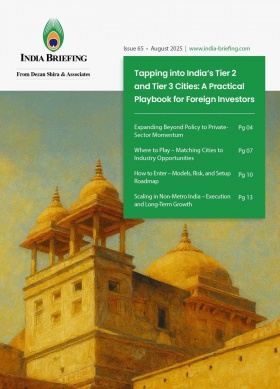What is GST Migration and Why it Matters for Businesses?
GST 2.0 marks a major upgrade in India’s indirect tax system, simplifying registration, invoicing, and ITC reconciliation through digital integration. Foreign businesses and multi-state operators should migrate promptly to ensure compliance and safeguard credits.
GST migration was the one-time process for businesses to move from the previous indirect tax laws in India to the new Goods and Services Tax (GST) system. It took place in 2017 when GST was first implemented, which replaced a complex system of multiple central and state taxes such as Value Added Tax (VAT), Central Excise, and Service Tax.
Businesses registered under the earlier indirect tax regime had to undergo GST migration to continue operations smoothly. This process, initially carried out in phases, ensured continuity of registrations and credits through the allocation of provisional and final GST identification numbers (GSTINs).
With subsequent upgrades to the system, particularly GST 2.0, businesses now benefit from a more streamlined portal, automated compliance tools, and simplified invoicing standards.
Key benefits of the GST framework for companies
Migration from a complex, multi-layered tax structure to a more consolidated tax regime was essential for a wide range of reasons, such as the following:
- Business continuity: Allowed smooth transition without re-registration.
- Integration into the Goods and Services Tax Network (GSTN): Onboarded all taxpayers onto a centralized compliance system.
- Seamless credit transfer: Enabled carry-forward of Input Tax Credit (ITC) from pre-GST regimes.
- Data unification: Consolidated taxpayer data under a single digital platform for easier audits and monitoring.
GST migration process: Under GST 1.0 and GST 2.0
Phase 1: Original migration (2016–2017)
- Provisional ID and password: Shared by VAT/Excise/Service Tax authorities.
- Portal enrollment: Businesses uploaded permanent account number (PAN), incorporation details, bank accounts, and digital signature certificate (DSC).
- Provisional GSTIN: Generated to allow operations during transition.
- Final GSTIN: Issued after verification of documents.
Phase 2: Migrating under GST 2.0
The new migration process under GST 2.0 has been simplified for both new registrants and migrated taxpayers:
- Single-click registration tracking with automated Application Reference Number (ARN) updates.
- E-KYC integration with Aadhaar authentication to reduce documentation.
- Auto-population of data from PAN and Ministry of Corporate Affairs (MCA) databases, minimizing errors in business details.
- State-wise registrations are simplified with standard templates and digital verification.
- Integrated invoicing system (e-invoicing) linked directly with GSTN for real-time validation, reducing compliance burden.
CLICK HERE TO KNOW MORE: GST Reforms in India: How Foreign Companies Can Prepare
Documents required for GST migration and registration
Even with GST 2.0, businesses must maintain the following records:
Business identity and incorporation proof
- PAN and incorporation details.
- Proof of business address.
- Earlier Provisional ID (if applicable) for legacy migration cases.
Address, bank, and director KYC requirements
- Bank account details.
- Identity and address of directors/partners.
Using digital signatures (DSC) for GST portal
- Digital signature certificate (DSC) of authorized signatory.
Common GST migration problems—and how GST 2.0 solves them
Portal downtime and technical glitches
In the initial phase of GST rollout, the GSTN portal frequently crashed due to high traffic. This delayed registrations and return filing for many businesses.
GST 2.0 solution: The infrastructure has since been scaled up with better server capacity and cloud-based architecture, ensuring smoother and more reliable access.
PAN mismatch and data validation issues
Many businesses faced issues where the names or details in tax records did not match the PAN database, causing registration failures.
GST 2.0 solution: Auto-validation with the PAN database has been introduced, minimizing manual errors and reducing delays in approval.
Low awareness among small businesses
Small businesses, particularly those without prior digital compliance experience, struggled to adapt to the online GST framework.
GST 2.0 solution: India has simplified onboarding steps and added guided tutorials, FAQs, and support features directly on the GST portal to improve awareness.
Multiple state registrations
Earlier, businesses with multi-state operations had to navigate separate, repetitive registration processes in each state, creating additional compliance burdens.
GST 2.0 solution: Registrations have been streamlined with standardized formats and a single-dashboard view, allowing easier management of multiple state registrations.
Transitional credit disputes
During migration, many businesses faced uncertainty in carrying forward ITC from the pre-GST regime, leading to disputes and mismatches.
GST 2.0 solution: Automated reconciliation mechanisms now allow ITC to be carried forward more transparently, reducing disputes and litigation risks.
Why migrate to GST and benefits of GST 2.0
The migration to GST and the subsequent upgrades under GST 2.0 provide businesses with significant advantages.
A key advantage of migrating to the GST regime has been the continuity of ITC, which safeguards working capital by allowing businesses to carry forward eligible credits from the pre-GST regime. The system also brought in standardized compliance, ensuring uniform reporting requirements across states and industries, thereby reducing duplication and confusion.
With a digital-first approach, GST 2.0 introduces real-time invoice validation and seamless return filing through e-invoicing, making compliance more accurate and efficient. In addition, simplified onboarding processes have reduced manual paperwork and enhanced transparency, allowing businesses-especially smaller ones-to adapt more easily to the GST framework.
Frequently asked questions on GST migration and GST 2.0
Q1. I applied for GST registration but have not received ARN. What should I do?
Complete the application process to generate your ARN.
Q2. I have ARN but no GSTIN. Can I still supply goods or services?
Yes. You may issue invoices without GSTIN. Once GSTIN is allotted, issue a revised invoice with GSTIN and report the supply with applicable tax.
Q3. I migrated and received a provisional ID but no GSTIN. How do I invoice?
Use the Provisional ID as your GSTIN until the final GSTIN is allotted.
Q4. I couldn’t migrate from Service Tax/Excise and took fresh GST registration. Am I eligible for transitional credit?
Yes, provided you referenced your old registration while applying under GST. Transitional credit is available under Section 140 of the CGST Act, 2017, read with Rule 117 of the CGST Rules, 2017.
GST 2.0 invoicing rules: What businesses must know
- Flexible format: Businesses can design their own invoice format; only prescribed fields are mandatory.
- Issuance timelines: Before delivery of goods; within 30 days for services.
- Relief for small transactions: For sales below INR 200 (US$2.25) to unregistered buyers, issue one consolidated daily invoice unless requested otherwise.
- Transport rules: Every consignment must carry an invoice or an e-invoice reference number.
- HSN code requirements: Waived for turnover up to INR 15 million (US$168,921.86).
- Sector-specific relaxations: Banking, insurance, and passenger transport need not mention addresses or serial numbers.
- Delivery challans: Allowed when goods are dispatched but the exact quantity is unknown.
- Non-taxable items: No separate bill of supply is needed if a VAT invoice is already issued.
ALSO READ: GST Rate Revisions for Services: What Businesses Need to Know
GST 2.0 advisory
The migration to GST laid the groundwork for a digitally integrated tax ecosystem in India. With the introduction of GST 2.0, core compliance activities—including registration, e-invoicing, and ITC reconciliation—are now more automated, transparent, and efficient.
Businesses should ensure that any pending migration cases are resolved without delay to avoid penalties and compliance gaps. Using Aadhaar-based e-KYC can further speed up the registration process, while integrating enterprise resource planning (ERP) or accounting systems with the GSTN’s e-invoicing platform helps automate reporting and reduce errors. It is also important to maintain historical migration records for future audits and reconciliations.
For companies undergoing restructuring or facing transitional credit disputes, seeking professional advisory support is strongly recommended. Expert guidance can help safeguard eligible credits, ensure full regulatory compliance, and reduce the risk of future litigation.
(With inputs from Melissa Cyrill)
(US$1 = INR 88.79)
To know more and for business support, contact our tax experts at Dezan Shira & Associates at: India@dezshira.com
About Us
India Briefing is one of five regional publications under the Asia Briefing brand. It is supported by Dezan Shira & Associates, a pan-Asia, multi-disciplinary professional services firm that assists foreign investors throughout Asia, including through offices in Delhi, Mumbai, and Bengaluru in India. Dezan Shira & Associates also maintains offices or has alliance partners assisting foreign investors in China, Hong Kong SAR, Vietnam, Indonesia, Singapore, Malaysia, Mongolia, Dubai (UAE), Japan, South Korea, Nepal, The Philippines, Sri Lanka, Thailand, Italy, Germany, Bangladesh, Australia, United States, and United Kingdom and Ireland.
For a complimentary subscription to India Briefing’s content products, please click here. For support with establishing a business in India or for assistance in analyzing and entering markets, please contact the firm at india@dezshira.com or visit our website at www.dezshira.com.
- Previous Article Why Foreign Companies Fail in India: 5 Costly Mistakes and Lessons for Future Investors
- Next Article An Investor’s Guide to Solar Manufacturing in India








